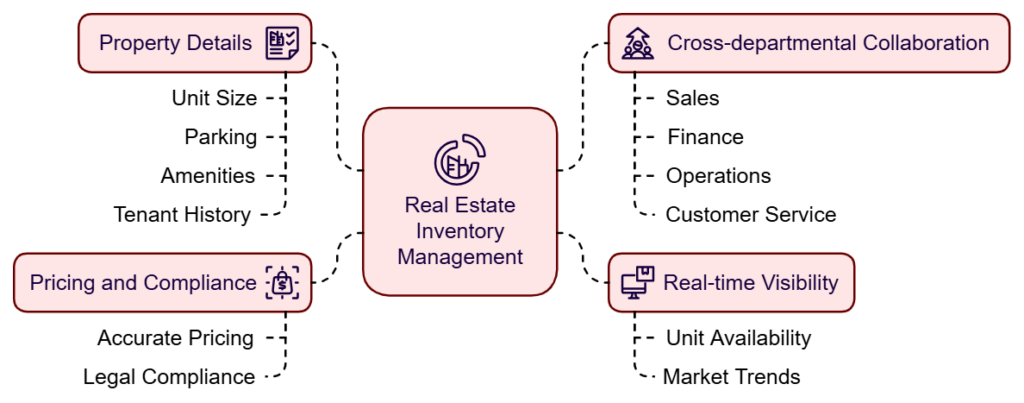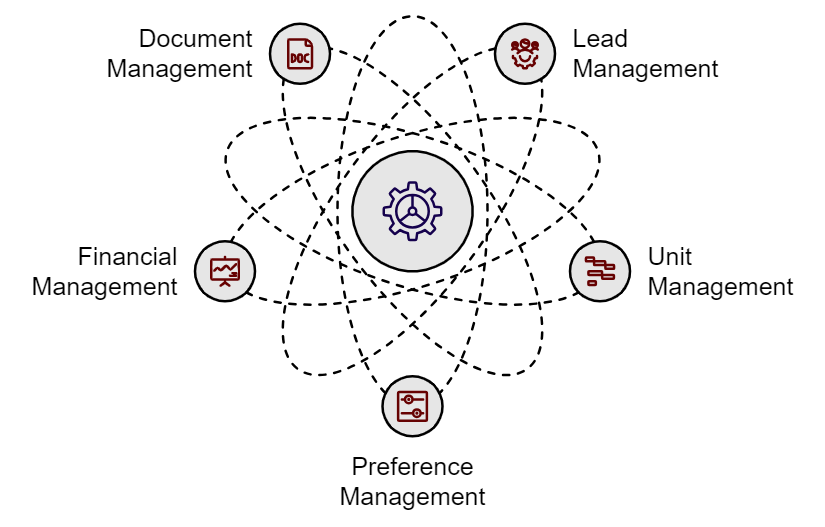Do I Need A Rental Management Software?
Comments Off on Do I Need A Rental Management Software?Residential leasing is no longer a simple task — one wrong move and everything falls apart. For real estate professionals, whether overseeing a small portfolio or managing thousands of units, managing tenants, maintaining properties, and staying on top of lease renewals demand seamless coordination and robust tools. For property managers and real estate developers handling multiple units, the right Rental Management Software: is the all-in-one solution to keep your leasing operations and make life easier for you and your tenants.
This software seamlessly transforms tedious manual tasks into efficient, automated processes. As a result, it empowers businesses to stay competitive and tenant-focused. Moreover, let’s explore its impact on residential leasing with actionable insights and real-life examples.
The Leasing Landscape: Why Traditional Methods Fall Short
Managing residential leases manually often leads to inefficiencies and errors. Consequently, traditional methods are no longer adequate for today’s dynamic real estate industry.

- Missed opportunities: Tracking payments, handling lease renewals, and managing tenant communications manually require significant effort.
- Inefficient processes: Relying on spreadsheets or notebooks for financial tracking increases the risk of inaccuracies.
- Poor tenant engagement: Slow responses to tenant queries and outdated communication methods can lead to dissatisfaction.
For companies managing thousands of units, these issues multiply exponentially. Rental Management Software acts as a digital assistant, helping you keep operations under control while fostering tenant trust.
Do I Need Rental Management Software?
“Why do I need rental management software?” This is a common question that often comes to mind, right?
Without a proper system in place, the residential leasing process can quickly become challenging. As a result, you may experience missed payments, delayed maintenance requests, and ultimately, frustrated tenants. Rental management software changes the game by automating the following situations;
- Is tracking rent payments manually taking up too much of your time?
- Do maintenance requests often slip through the cracks or get delayed?
- Are you struggling to remember which leases are up for renewal?
- Do you find keeping up with tenant inquiries and communication difficult?
- Are you losing tenant leads because there’s no easy way to track them?
- Do you spend hours preparing and sending out lease agreements manually?
- Are tenants unhappy because they can’t access services like maintenance requests or payment portals online?
- Do you often forget which maintenance request corresponds to which property?
- Are you sending individual emails to tenants about routine inspections?
The good news? Rental Management Software streamlines these tasks, turning chaos into clarity. It’s the solution you need to take control and grow your business effortlessly.
Rental Management Software: Your Blueprint for Leasing Success
1. Real-Time Dashboards: Make Data Work for You
Managing rental properties efficiently requires quick access to accurate information. Therefore, Rental Management Software offers centralized dashboards, simplifying decision-making by presenting all critical data in one place.
- No more juggling spreadsheets or manual updates—track vacancies, rent payments, and lease expirations at a glance.
- Focus your energy where it matters most, like filling empty units faster or addressing pending maintenance requests.
- Stay ahead with up-to-date insights that help you make smarter decisions and reduce downtime.
By leveraging centralized tools, you are able to turn data into action, saving time and improving efficiency across your rental operations.
2. Detailed Reporting: See the Big Picture
A real estate firm’s CFO needs to assess its financial health at the end of the quarter. Comprehensive reporting features in Rental Management Software offer a holistic view of its business operations, helping it stay on top of leads, financials, and overall efficiency.
- Comprehensive Reports: Track leads, monitor financial performance, and evaluate operational efficiency in one place.
- Data-Driven Insights: Access detailed reports to make informed decisions quickly.
- Forecasting and Optimization: Use financial reports to predict cash flows and optimize rent pricing for better returns.
This enables the CFO to adjust rent pricing strategically, thereby maximizing profits and enhancing cash flow management. Furthermore, with detailed reporting, you’re not just managing properties — you’re making smarter, data-backed decisions.
3. Automated Payment Reminders: No More Chasing Rent

Managing rental payments efficiently is essential to maintaining smooth operations and financial stability.
- Automated Reminders: Set up automatic notifications to remind tenants about upcoming or overdue payments.
- Timely Communication: Ensure tenants receive payment reminders at the right time, helping to keep them on track.
- Reduced Admin Work: Free up time for property managers by automating routine tasks like sending reminders.
Tenants receive timely notifications about upcoming and overdue payments, which helps them stay on schedule while also improving cash flow for the property management team.
Moreover, automated reminders mean you no longer have to chase tenants for rent — the system works for you.
4. Simplified Lease Renewals: Proactive, Not Reactive
With automated notifications for upcoming lease expirations, renewals are no longer a hassle.
- Automated Notifications: The system sends reminders for upcoming lease expirations, giving you enough time to plan ahead.
- Proactive Engagement: Property managers can send personalized renewal offers to tenants, improving retention rates.
- Streamlined Processes: Simplify renewal tasks, reducing last-minute rush and increasing efficiency.
A real estate developer managing a community was struggling with lease renewals. By using automated notifications for lease expirations, they proactively reached out to tenants with personalized renewal offers months before the lease expired. This proactive approach led to an increase in their lease renewal rate, as tenants felt valued and informed.
5. Seamless Tenant Communication: Building Trust and Loyalty
Effective communication with tenants is essential for building strong relationships and maintaining satisfaction. However, several common challenges may arise:
- Tenants may feel uninformed about maintenance schedules or property updates.
- Delays in addressing tenant concerns or requests can lead to frustration.
- Managing communication with multiple tenants across different channels can become overwhelming.
How the Software Helps:
- Automated Updates: Send timely, clear notifications about important updates like maintenance or lease renewals.
- Personalized Notifications: Tailor messages based on tenant needs and preferences to enhance engagement.
- Self-Service Portals: Allow tenants to easily access information, submit requests, and manage their accounts on their own.
A leasing manager was struggling with tenant complaints due to unscheduled maintenance disruptions. However, by utilizing proper communication tools, they were able to inform tenants in advance about upcoming maintenance schedules. Consequently, this proactive communication not only reduced complaints but also helped build goodwill, resulting in happier tenants and fewer disruptions.
Ultimately, seamless communication fosters trust enhances tenant satisfaction, and promotes long-term loyalty.
Why Property-xRM Fits: Rental Management Software?
If you’re exploring options, Property-xRM is an excellent choice. Powered by Microsoft Dynamics 365, it’s customized specifically for the real estate industry. From advanced inventory tracking to robust tenant management features, Property-xRM helps real estate companies streamline residential leasing while keeping tenant satisfaction at the forefront.
Conclusion: Take Control of Your Leasing Operations
In conclusion, the importance of lease management software in today’s real estate landscape cannot be overstated. From simplifying rent collection to enhancing tenant communication, the right tools can seamlessly transform property management from a headache into a streamlined process.
Moreover, if you’re ready to work smarter, not harder, solutions like Property-xRM can revolutionize your leasing operations—and perhaps even restore your peace of mind. The future of leasing is here, so don’t let it pass you by!
Finally, take the next step today and explore how Rental Management Software can transform your leasing operations while unlocking new growth opportunities!
































